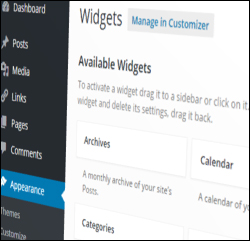 As we have explained in this article, one of the many benefits of choosing the WordPress web publishing application to build and grow a website is that you can easily add content, expand your site’s functionality, or reorganize the layout of your website with no programming skills or knowledge required.
As we have explained in this article, one of the many benefits of choosing the WordPress web publishing application to build and grow a website is that you can easily add content, expand your site’s functionality, or reorganize the layout of your website with no programming skills or knowledge required.
WordPress allows you to quickly and easily insert, delete, and rearrange various types of content in your blog’s sidebar (and header and footer sections too, depending on what theme you use) using widgets.
Once you know how to use widgets, you can easily add things to your site like:
- list of pages
- content categories
- archive
- menus
- links to external sites
- posts that you want to promote
- comments
- clickable ad banners
- client testimonials
- polls
- RSS content
- registration box
- video thumbnails
- Facebook feeds
- display widgets from external sites (e.g. Facebook friends)
- administrative forms (e.g. login, register, etc.)
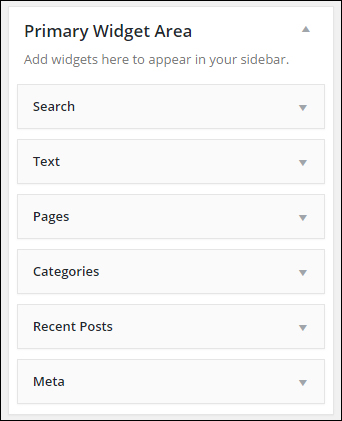
(Widgets make managing and using WordPress easier)
To learn more about what widgets are, how widgets work and why widgets can make managing your site easier, go here:
In this tutorial series we will show you how to use and configure a number of commonly-used WordPress widgets.
Using Widgets
Widgets – Basic Concepts
Before we start learning how to configure widgets, it helps to first explain some of the basics of using widgets:
Most WordPress Themes Support Widget-Ready Areas
Most WordPress themes support widgets and provide areas in your theme’s layout where widgets can be added, such as the sidebar area, header area, and footer sections. Depending on what theme you are using, widgets can sometimes also get added inside the content area …
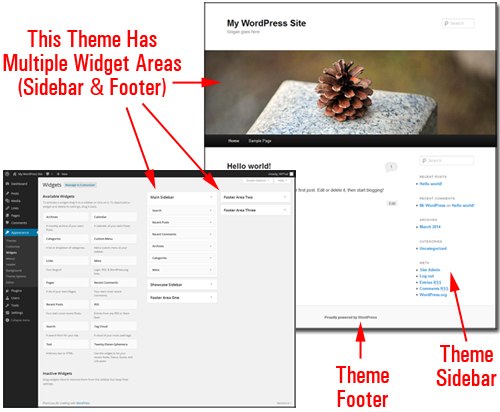
(Many WordPress themes provide multiple widget sections)
These widgetized sections correspond to a feature inside the Widget administration screen called “Widget Areas” …
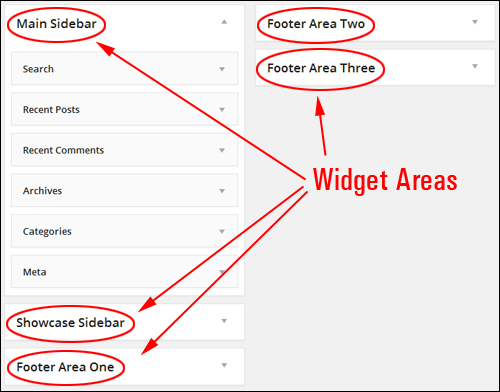
(Widget Areas)
Your Widgets Panel
The Widgets section displays all the widgets that can be used on your site.
On the right-hand side of the window, you can see your “active” widgets …
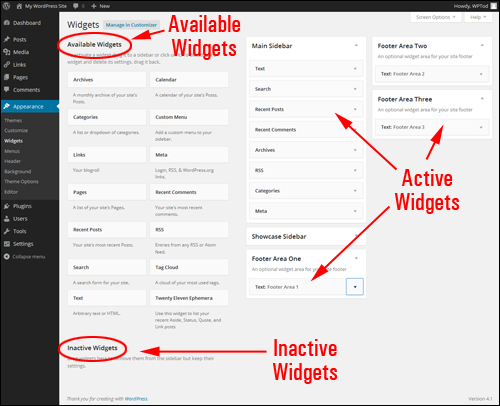
(Widgets can be activated or deactivated with drag & drop ease)
Available widgets can be activated or deactivated using drag & drop.
Widgets dragged from the Available Widgets section to widget areas like the sidebar, footer, etc. become immediately active and available for use.
The Widgets area also includes an Inactive Widgets section that lets you remove widgets that you no longer want to actively display on your website. Inactive widgets retain their settings.
Reorganize WordPress Widgets Using Drag And Drop
You can easily insert, activate, deactivate, reorder and delete things using widgets just by dragging and dropping items inside the Widgets section …
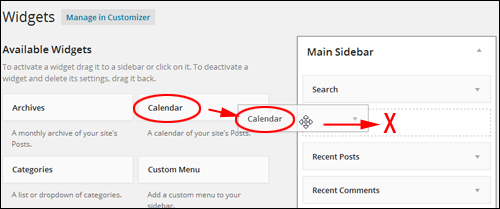
(Rearrange your site’s widgets using drag-and-drop)
You can also easily reorder the layout of your website’s widgetized sections using drag-and-drop.
For example, in the image below, the widgets have already been configured to display things like:
- A newsletter opt-in form,
- A click for support button, and
- ’Click to call’ buttons from a widgetized WordPress plugin (i.e. a WordPress plugin that adds an accompanying widget to your site) …
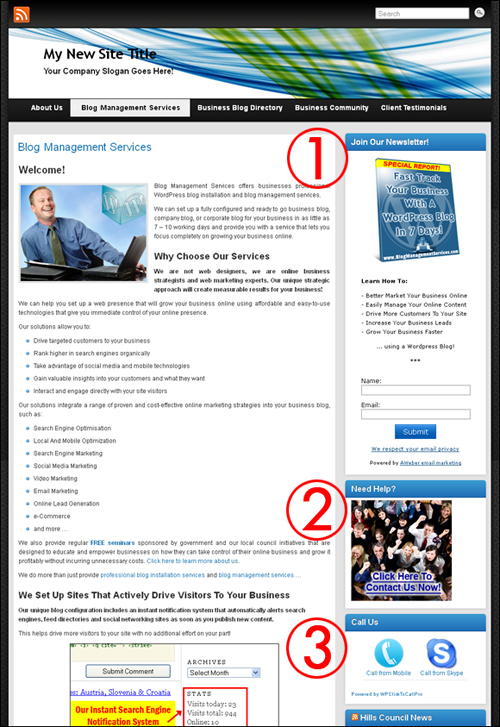
(Widgets control how certain features on your site display)
If you take a look inside the example site’s Widget area, you will see that these features display on the site’s sidebar section in the same order as they have been arranged in the active widget area …
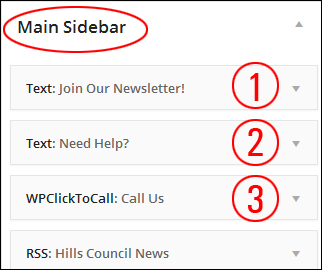
If we rearrange the order of these widgets in the Sidebar Widget Area using drag and drop …
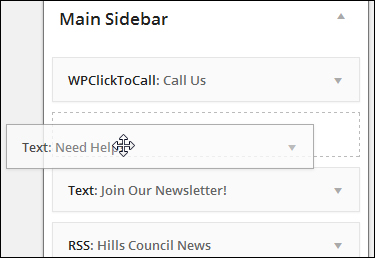
(Drag and drop to rearrange widgets in the widget area)
The widgets have now been reordered in the sidebar …
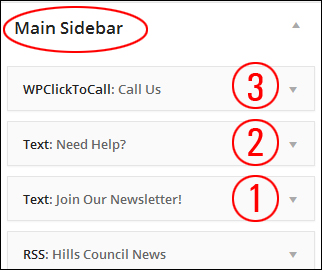
This instantly changes the order of items in the site’s sidebar.
Rearranging sidebar layout using widgets can help to improve user experience.
Note in the screenshot below that the ‘click to call’ feature (3) is now first the sidebar, and the ‘contact us’ section (2) is now placed above the newsletter subscription form (1) …
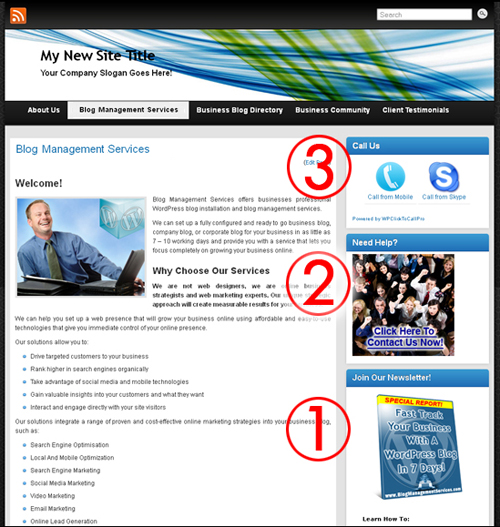
(Rearrange sidebar layout using widgets to improve user experience)
Deleting Widgets From Your Sidebar
Deleting widgets from your WordPress sidebar navigation section is really easy.
For example, let’s show you how to remove the Search widget from the sidebar …
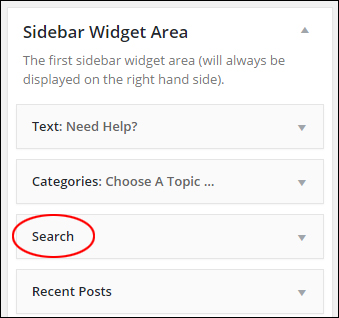
(WordPress Search widget)
To remove a widget from an active Widget area, you can either open up the widget and click the Delete link …
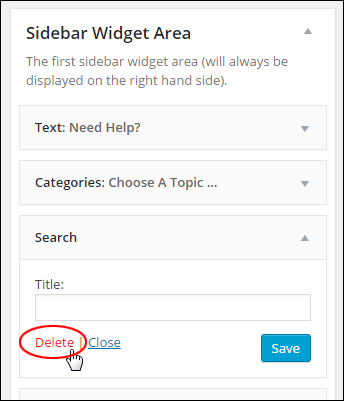
(Delete your widgets)
Or just drag the widget out of the Active Widgets area and drop it into the Inactive Widgets area …
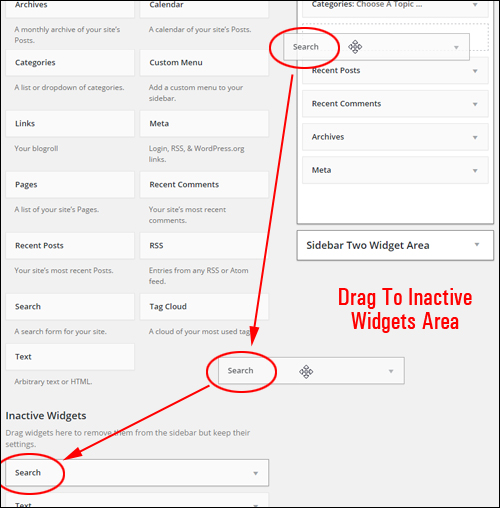
(How to remove widgets)
Repeat this process for any other widgets you want to remove from the sidebar. You can always restore widgets by moving them back into the active widgets area.
Widget Settings
Many widgets offer various settings that allow you to further customize these. This can include things like hiding information from users, displaying additional forms, fields, or information, specifying sizes of sidebar images, videos, etc.
Clicking on the little triangle in the corner of a widget toggles between expanding and collapsing the item and displays the widget’s settings …

(Toggles expand/collapse widget settings)
When the widget expands, you can change and save your settings, click Delete to remove your widget from the “Active Widgets” section, close the widget, or click on the triangle to collapse the widget …
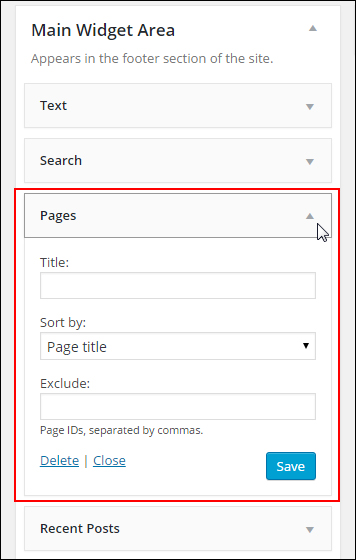
(Widget settings)
![]()
Some widgets provide users with little to no customizable options, or they may only allow you to add an optional title …
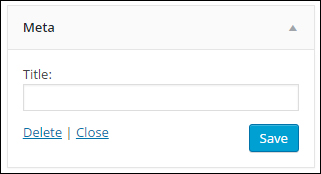
(Some widgets provide users with little to no configurable options)
Previewing Widgets
Depending on the WordPress theme you have installed on your site, you’re also able to manage and customize your widgets without making actual changes to your site. This way, you can be sure that you like the customized edits before committing anything live to your website or blog.
Widget management is a great feature of WordPress. You can work in preview mode inside the WordPress Theme Customizer screen (Appearance > Customize) and see how the widget content will appear prior to publishing any changes (to avoid making errors), or manage your widgets on the fly using the Widget editor area.
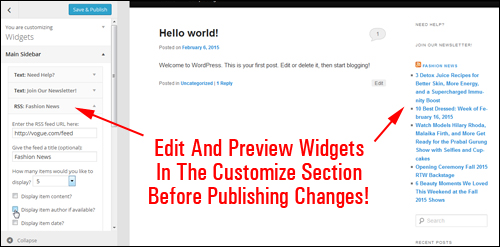
(preview widget changes in the Customize feature)
Wherever you are on the front-end just calick the Customize link in the toolbar …
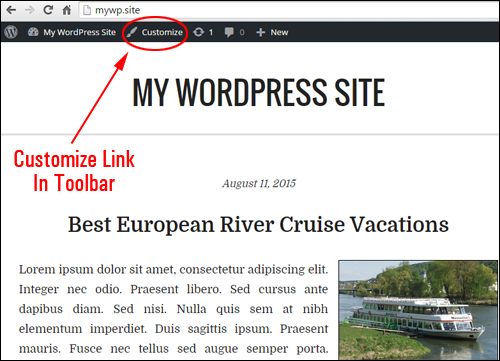
(Customize your site quickly)
This brings you to the Customizer section in the backend.
You can do several edits, modifications and adjustments in preview mode (like adding, deleting and moving widgets around), and this will all be done in real time. If you like what you’ve done, click the “Save and Publish” button and the changes will instantly become available on the blog’s frontend.
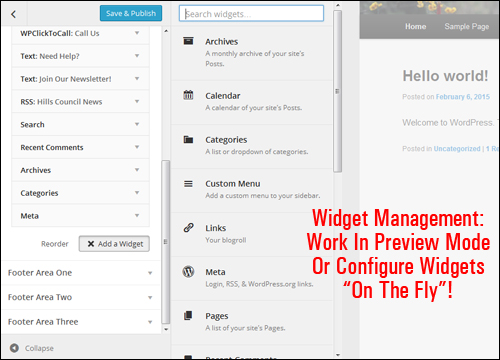
(Widget management – work in preview mode)
After saving the changes, the new configuration will automatically be displayed on your site.
![]()
Since the theme you use determines how elements display on your site, we recommend installing your theme first before configuring widgets on your sidebar.
Also, remember to use the WordPress Customizer to preview all changes. This saves you from having to keep two browsers open while you complete this tutorial (one to work in and one to check how the changes are coming along).
Now that you know the basics of using widgets, the next step is to learn how to configure a number of frequently-used sidebar widgets in WordPress.
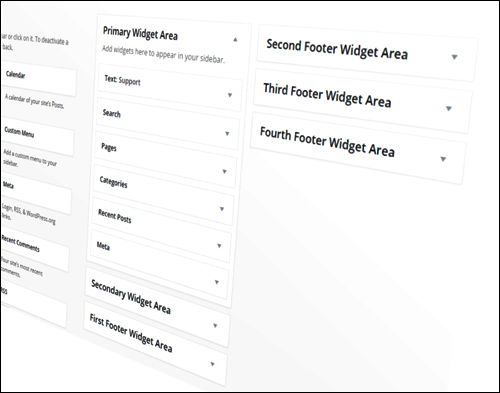
***
This is the end of part 1 of this tutorial.
Click here to continue reading:
***
"I have used the tutorials to teach all of my clients and it has probably never been so easy for everyone to learn WordPress ... Now I don't need to buy all these very expensive video courses that often don't deliver what they promise." - Stefan Wendt, Internet Marketing Success Group
***